Killing off the death penalty in Switzerland
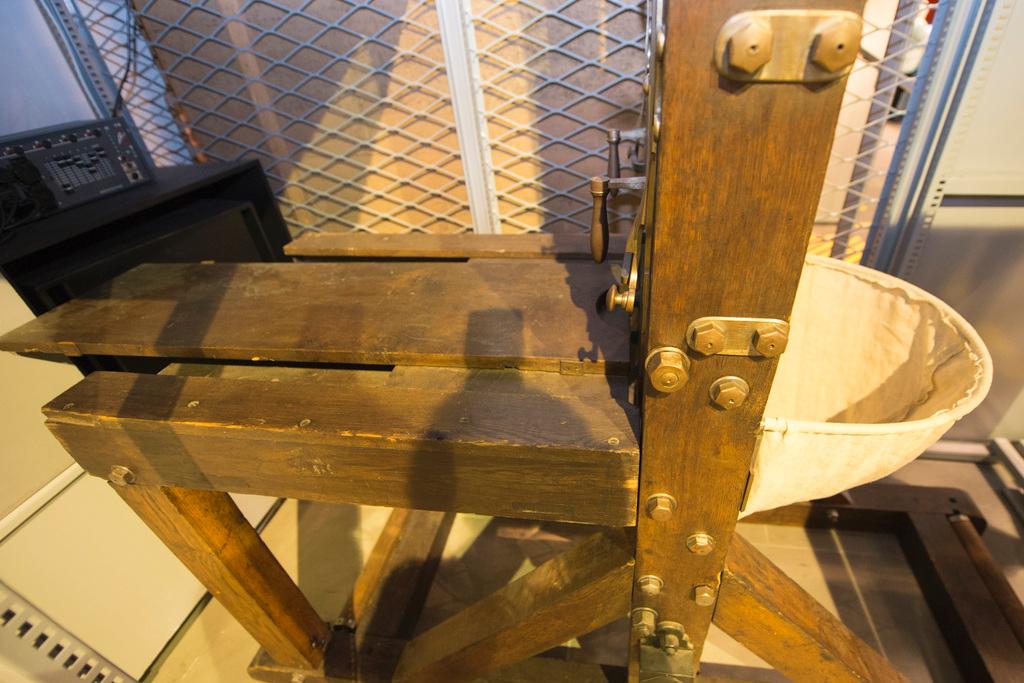
Exactly 75 years after the last peacetime execution in Switzerland, swissinfo.ch looks back at the abolition, reintroduction and re-abolition of capital punishment in a country that today is pushing for an international ban.
Hans Vollenweider could consider himself unlucky. Not as unlucky as the three people he killed, admittedly, but as he was led blindfolded from his cell in Sarnen, canton Obwalden, to the guillotine at around 2am on October 18, 1940, he might have cursed Swiss bureaucracy.
Two years earlier, 54% of Swiss voters had decided to abolish the death penalty. Unfortunately for 32-year-old Vollenweider, this took four years to enter into law, on January 1, 1942.
“There are generally two reactions: some find it shocking and terrible, others make comments, even in a group, like ‘go on, put your head in there’,” Christoph Lichtin, director of the Lucerne History Museum, tells swissinfo.ch.
Lichtin is standing in front of the very guillotine and cotton basket that removed and caught Vollenweider’s head. It is one of the museum’s biggest attractions, despite not being operational (with objects like melons, obviously).
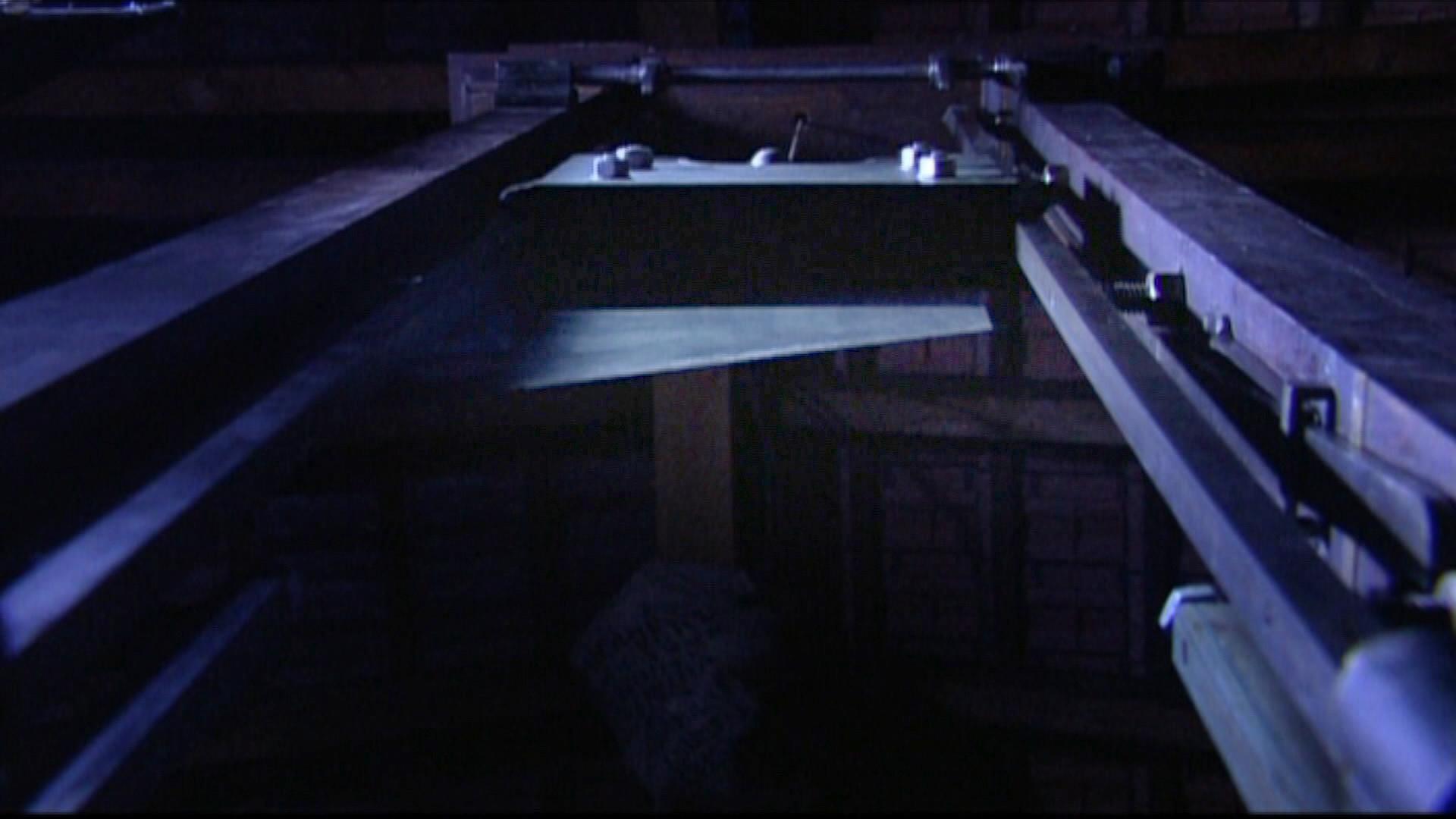
More
The last time the blade came down
Built in Zurich and sold to canton Schaffhausen in 1863, the four-metre high oak contraption is in good condition and the blade still looks shiny and, more relevantly, sharp.
“Originally tests were made with animals to see whether guillotines worked. They discovered that the blade should be at an angle to ensure the head really came off. They started with a horizontal blade but that didn’t always result in a clean cut…”
Needing a seat, swissinfo.ch wondered whether it was just an urban myth that a survivor of a botched guillotining would be pardoned.
“Honestly I can’t see that happening – even half a guillotining would result in serious injury!” Lichtin said.
“Previously swords were used for executions and the guillotine replaced this method because chopping off someone’s head with a sword requires great skill. There are many stories of the executioner not getting a clean cut first time, resulting in a lot of suffering on the part of the condemned person. So the guillotine was seen as a more humane means of execution, because ultimately the punishment is death and not torture leading to death.”
Public executions
As Lichtin said, in the Middle Ages and following centuries, the most common method for execution, at least for males, was decapitation by sword. Switzerland was still busily executing “witches” until 1782.
The historian Gerold Meyer von Knonau (1843-1931) compiled some gruesome statistics for canton ZurichExternal link from the 15th century up to and including the 18th century.
He noted that 1,445 people were condemned to death (1,198 men, 247 women). Of these, 915 were to be beheaded, 270 hanged, 130 burnt alive, 99 drowned, 26 broken on the wheel (all four limbs are smashed with an iron bar and threaded through the spokes of a large wheel which is then placed on top of a pole), one quartered alive, two buried alive, one immured (locked in a room without food or water until death) and one impaled. The last three methods were in use in the 15th century; drowning was discontinued in 1613.
Last execution in peacetime
Italy 1947
Germany 1949 (East Germany 1981)
Austria 1950
Britain 1964
France 1977
United States October 14, 2015
What’s more, those were the days when executions were public.
“Originally outside Lucerne there was a medieval place of execution, a so-called Wasenplatz, where dead animals were kept. Here, executions were not only public but the corpses were left hanging on gallows for months, decomposing. The whole thing was meant to have a deterrent effect,” Lichtin said.
“Later, in Lucerne, near the prison there was a place for public executions, a stage around which people would gather and watch. It had an almost theatrical character, like a performance. Saying it had a folk festival atmosphere is probably overdoing it, but there was definitely a lot of public interest. Just look at the amount of interest in public executions today in countries that still carry them out.”
Pirmin Meier, a historian and expert on the death penalty, added: “In 1790, an arsonist was executed in Baden [canton Aargau] in front of 3,000 to 4,000 people and everyone got a free bit of bread, children too! So in those days executions were a sort of social event and really spectacular.”
One of the last public executions was in canton Uri in 1861. Kaspar Zurfluh, who had killed his pregnant bride, was executed by sword on a bridge.
In this in-depth interview, Meier discusses the connection between the death penalty and sovereignty, Swiss efforts to ban the death penalty internationally and whether it will ever return to Switzerland.
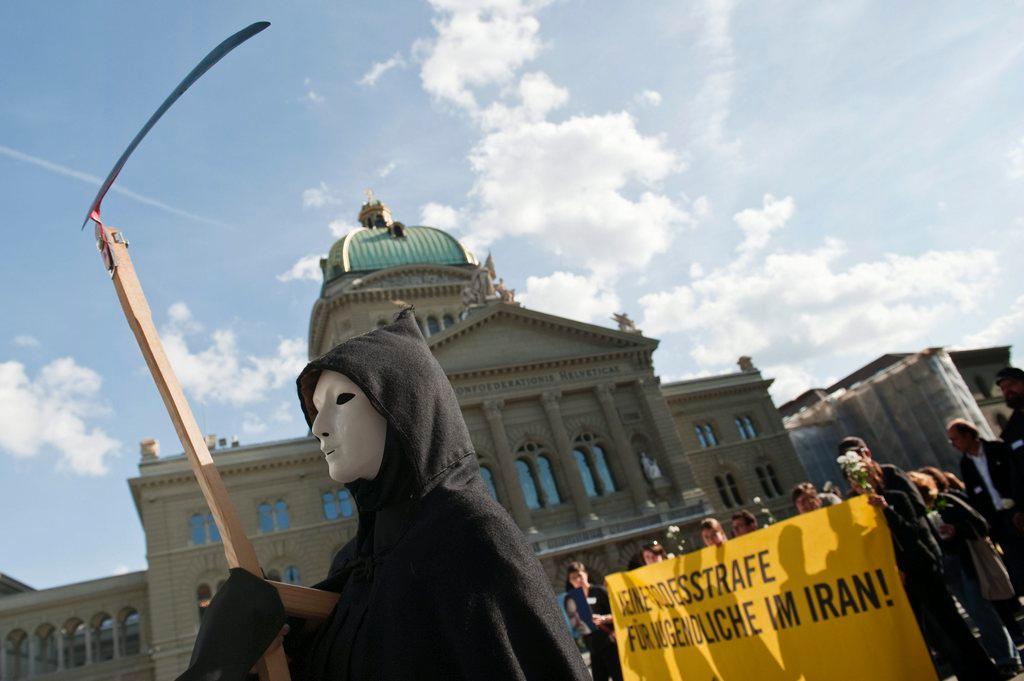
More
‘In the 20th century we had a humanitarian offensive’
First abolition
In 1835, a new criminal code entered into force in Zurich, with the guillotine being the only permissible method of execution (other cantons allowed the person being executed to choose between the guillotine and the sword).
Because at the time there was only one guillotine in Switzerland – in Geneva – the Zurich authorities sent a mechanic, Johann Bücheler, to Geneva. Six weeks later he had built a guillotine, which between 1839 and 1865 separated 11 heads from their bodies. Zurich’s constitutional court eventually abolished the use of the guillotine in 1868.
Over in Lucerne, in 1841 a group of citizens in Lucerne demanded the cantonal government abolish and destroy its guillotine (also built by Bücheler), calling it a “revolutionary instrument of death with which thousands of innocent victims had been executed and which doesn’t correspond to a religious and sincerely freedom-loving government”.
Lucerne destroyed its guillotine the following year and went back to using the sword, whose last victim in Lucerne was executed in 1867.
But change was in the air. In 1848, the death penalty was abolished in cantons Fribourg, Neuchâtel, Zurich, Geneva, Basel Country, Basel City and Ticino. It was then abolished at a federal level in 1874, thanks to a Liberal and Democratic majority in parliament.
Re-introduction
Swiss efforts
On October 2, 2015, the United Nations Human Rights Council approved a resolution on the abolition of the death penalty worldwide.
The resolution, which was tabled by eight countries including Switzerland, won approval from 26 member states. Thirteen states rejected the proposal and eight abstained.
The promotion of human rights, notably the abolition of capital punishment across the world by 2025, is a priority of Switzerland’s foreign policyExternal link.
Foreign Minister Didier Burkhalter launched a joint declaration with counterparts from 11 other countries a year ago.
And for five years Switzerland did not have capital punishment. But following a spate of crimes, possibly connected to an economic depression, that previously would have merited the death penalty, in May 1879, 52.5% of voters decided to let cantons reintroduce it, although not for political crimes.
A report in the Neue Zürcher Zeitung from October 22, 1950, noted that it could, however, be used for crimes including “murder, manslaughter of relatives, arson, flooding and derailing a train when death was premeditated or could be foreseen, and poisoning that is a danger to the public”. Minors and pregnant women were also spared in all cantons.
Cantons that did reintroduce the death penalty over the following years were Schwyz, Zug, Fribourg (one of the first to abolish it in 1848), Schaffhausen, Appenzell Inner Rhoden, St Gallen and Valais.
Lucerne did so in 1883 and regretted destroying its only guillotine. “But people remembered that a few guillotines still existed around the country, so for executions in Lucerne they borrowed this guillotine from canton Schaffhausen,” Lichtin said.
It stayed in Lucerne and was “sub-let” to other cantons. Did Lucerne charge for the service? “There was probably some sort of agreement,” Lichtin said. “You’ve also got to bear in mind that the guillotine would be taken apart and put back together again – you couldn’t transport it whole. There was a model, which we also have here [it’s about 50cm high], which would show the authorities what it should look like when they were reassembling it.”
Lucerne eventually bought the guillotine off Schaffhausen for CHF1,000 in 1904, using it several times before the death penalty was finally abolished in 1942. It remained in military criminal law until 1992 for wartime crimes such as treason, but the last execution during wartime took place in 1944.
The situation today
As of July 2015, 101 countries have abolished the death penalty for all crimes.
In 2014, at least 22 countries around the world carried out executions.
In 2014, at least 2,466 people were sentenced to death worldwide – up 28% on 2013.
(Source. Amnesty International)

In compliance with the JTI standards
More: SWI swissinfo.ch certified by the Journalism Trust Initiative









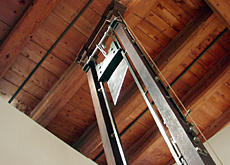


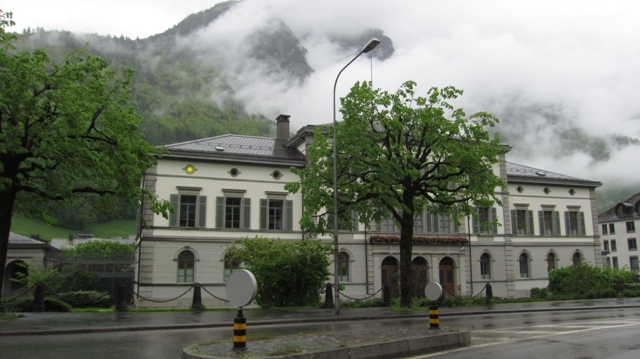

You can find an overview of ongoing debates with our journalists here . Please join us!
If you want to start a conversation about a topic raised in this article or want to report factual errors, email us at english@swissinfo.ch.